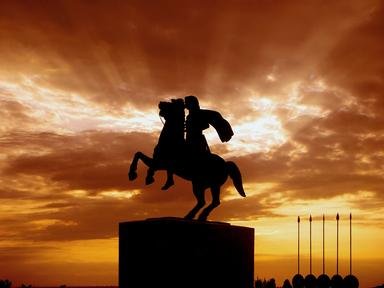Quiz Answer Key and Fun Facts
1. In 334 BCE, at the age of twenty, Alexander was already king of Macedon. Where did he fight his first major battle against the Persian army under its satraps in Asia Minor?
2. Who was Alexander's most-trusted lieutenant, who often led contingents on his left flank?
3. At the Battle of Issus (333 BCE), who had taken command of the Persian forces in Asia Minor?
4. Who were the Companions, or "hetairoi"?
5. What was it about the Phoenician city of Tyre that made it so difficult for Alexander to conquer?
6. What did Alexander do with the majority of the citizens of Tyre after the city had fallen?
7. What is a "sarissa"?
8. After the Battle at Issus (333 BCE), who did Alexander capture in the ensuing route of Persian forces?
9. After the Battle of Gaugamela, Alexander marched on the city of Ecbatana. Darius, having heard of his approach, fled. What did Alexander do once he had caught up with the fleeing Persian king?
10. The Battle of Gaugamela (331 BCE) effectively spelled the end of Persian rule in Asia Minor. Darius chose this site for what [geographical] reason?
Source: Author
OdinsHrafn716
This quiz was reviewed by FunTrivia editor
bloomsby before going online.
Any errors found in FunTrivia content are routinely corrected through our feedback system.

